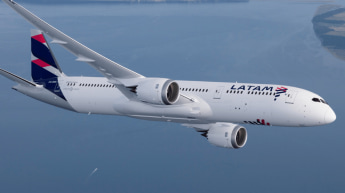
GE Aviation and New Zealand air navigation service provider Airways New Zealand have completed the redesign of the Queenstown airspace that more than doubles hourly airport capacity. The cornerstone of the project is the new Required Navigation Performance (RNP) flightpaths that enable concurrent arrivals and departures at the airport.
To meet demand from a 30 per cent increase in passenger numbers over the past three years, Airways needed to redesign the airspace to support safety initiatives while greatly improving efficiency in the terrain rich environment where no full-service radar is available.
The accuracy of the RNP paths allows air traffic control to confidently manage up to 12 aircraft per hour, compared to five with previous procedures. Controllers can now to monitor arrivals and departures as opposed to continuously providing tactical separation.
“We engaged a wide group of stakeholders during the project to ensure we were able to simplify controllers’ workload, deploy consistent and predictable flight paths, better utilise the airspace and increase take-off payloads where possible,” said Ed Sims, CEO of Airways New Zealand.
“The new RNP departure procedure enables an increased takeoff weight on runway 05 of approximately 1,700kg.”
GE, Airways and the New Zealand Civil Aviation Authority worked closely with the participating airlines to optimise the RNP arrival and departure flight paths, ensuring maximum operational efficiency. The new RNP paths, which were implemented in November, have cut the average flight delay from more than six minutes to less than one minute per flight. The new RNP flight paths were integrated with other non-jet flight paths to streamline traffic, and all airlines are benefiting. Flight delays have been reduced from approximately 2,400 minutes a month to around 200 minutes a month.
“Performance-based Navigation, and in particular the RNP AR design criteria that allows curved approach and departure paths to reduce carbon emissions, avoid terrain and noise sensitive areas, are aligned perfectly with Air New Zealand’s intent to have the highest possible environmental credentials in the world,” said Captain Phil Kirk, PBN program manager for Air New Zealand. “GE Aviation came through with procedures that deliver benefits on all counts. We appreciate that our crew and passengers no longer have gate holding and spend very little time in holding patterns.”














